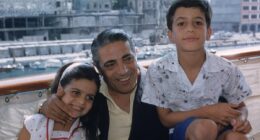THE brave efforts of Ukrainian warriors to defend their land against Vladimir Putin come at a bloody cost.
Every day, fighters are killed and maimed in the rural villages and countryside along the frontline.



Due to the scarcity of medical facilities, the military must establish field hospitals known as stabilisation points or “stab points” to initially attend to the injured.
In certain cases, wounded soldiers may endure up to five days without assistance before being able to transfer to hospitals for basic treatment and readiness for ambulance transportation.
One of these stab points is hidden in the countryside near Bakhmut, east Ukraine, just a few kilometres from the frontline.
Patients and medics must switch off their phones to avoid being tracked by bloodthirsty Russians.
If the Russians find the location of a stab point, they send in assault drones to bomb it, slaughtering the medics and patients inside.
An officer told The Sun: “The safety of our doctors is the first thing we care about.”
The hospital has two wards – one for “heavy” injuries and one for less serious wounds.
It’s a mixture of a trauma department and an intensive care unit – with more than 10 doctors and nurses working round the clock.
One of the brave nurses said “the best work for us is when we don’t have work,” because work means injured soldiers.
It is a quiet, nervous wait for the nurses while they do not have any patients.
Everyone springs into action when two injured soldiers are delivered – both are in agony with shrapnel wounds.
One has a shard jammed into the flesh of his leg, while the other has lost two fingers and suffered a broken leg.
The skilled team works quickly on the injured patients.
In instances of severely wounded soldiers, who may be partially conscious, medical professionals have to use scissors to remove their military clothing and examine their bodies for additional injuries.
They inject him with painkillers and insert a catheter whilst trying to calm his gut-wrenching screams.
His fingers and palms, torn to shreds, are carefully bandaged, and nurses work on his broken leg.
In under 10 minutes the patient is ready to be transported in an ambulance away from the frontline.
Ruslan, a 49-year-old anaesthetist, said the patient had soft tissue injuries to both legs and fingers of his right hand
“We bandaged and splinted the affected limbs in time,” he said.
“The patient is waiting for transportation to the advanced surgical team, where he will be provided with further qualified medical care.”


The Ukrainian Army doesn’t reveal the number of soldiers injured day-by-day, but another medic admitted: “It can be pretty rough.”
“My older colleague, who I worked with at another stab point, told me that every time you are not busy, just go and sleep.”
The medic added: “Sometimes you finish with one soldier, and go straight to another, and so on and so on.”
Petro, 32, an experienced doctor who worked in intensive care before the war, said the real work for the teams starts after dark when it is easier to evacuate soldiers from the front line.
“The most common injuries are shrapnel wounds and concussions,” he said.
“The formula for providing care to the wounded includes initial examination, stopping bleeding, fluid administration, and further surgical care.”
The medics give soldiers all the advice they can – teaching them how to apply tourniquets and about first aid kits.
But, Petro admits, anything can happen in the brutal battlefields and it is impossible to fully protect yourself.
He has seen soldiers in some grim conditions.
“Sometimes, the tourniquet has to be left on the limb for a long time, up to five days, if it is impossible to evacuate the soldier,” he said.
“In these cases, doctors are forced to amputate the limb in order to save the patient’s life.”
The situation on the front line remains bleak for Ukrainians, but medics like these are working tirelessly to save lives and ease suffering.


















